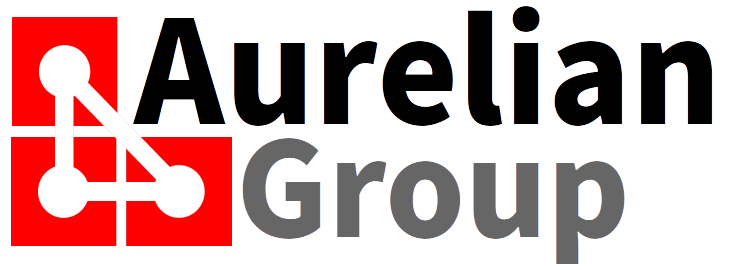The final post in the "Lean CRM" series. In previous posts we have discussed the importance of simplicity of the system, consistency of the generated data, engagement of the team, and relevance/accuracy of the data in order to retain a return on the CRM investment. With all these things in place, there is one major factor left that can influence this return on investment - the availability of the CRM system, to everyone and everywhere.

Rule 5: Get it everywhere
The return on the CRM investment is proportional to the access employees have to the system - both in number of employees, and in the number of places (or devices) it can be accessed. If CRM is a company strategy on how to interact with customers, then it transcends the "sales application" - everyone in the company is in service of the customer. And not only when they are on site, but on the road selling to customers, installing or servicing equipment, delivering projects, or visiting interstate or international campus for training or trade-shows - customers do not stop being customers just because you left your desk.
CRM for all
The first step is to get CRM as deep an exposure as possible within the organisation. Being "customer obsessed" may be a fashionable term, but only if your CRM strategy involves every aspect of the business, where every department of the business acts to serve the customer, is this true. And in serving the customer, one needs to be aware of what the customer needs are, and how they can be met directly or in support of other teams within the organisation. In other words, everyone needs CRM access.
All for CRM
Getting CRM for all is a good start - but what about other data generated that affects customer interactions - duplicating data entry does not seem like a sound tactic. That leaves either integration, or foregoing the potentially relevant information in the field. For example, when visiting a customer regarding a new sales opportunity, it is useful to see any outstanding invoices, or escalated service requests. This knowledge may drive a different behaviour during the customer meeting, driving towards customer satisfaction in return for a profitable ongoing business relationship. The absence of this information inevitably leads to a more "transactional" conversation, focused on the sale at hand, not the overall customer relationship life-cycle. Having a conversation that takes into account all relevant customer touchpoints not only leads to a deeper engagement with the customer, it can lead to shorter time to payment, increased share of wallet, and a higher barrier to access for the competition.

CRM everywhere
Having a mobile client for a CRM system is no longer a luxury - information flows incredibly fast, faster than traffic takes you back to the office. A CRM Mobile client is offered by many CRM vendors (you really should not consider a CRM system that does not have a native mobile client). A few things to consider are the responsiveness of the application (no use if it takes an annoyingly long time to start up - nobody is going to wait for that), the ease of use, and the functionality offered. A key decision point should be the user experience - what do users typically do on a mobile client for a CRM. Mostly, the mobile CRM is accessed in the moments in between meetings, waiting for the next appointment, or during a coffee break. These are mostly tasks done in preparation for a next meeting, planning activities for the remainder of the day, or to quickly make a sales call to another (potential) customer. It is therefore important that the mobile client opens fast, gives quick insight into the activities of the day (with the ability to dive deeper into specific accounts or opportunities), and make a call directly from the application.
The second function of a CRM is to record new information. Typically, this is under-served at a mobile application. Can you directly create a quote from your mobile application, and have it sent directly to the customer, minutes after the visit? Are email templates available in your mobile application? Can you instigate a workflow involving the back-office at the tap of a finger? Or take voice-notes, summarising the results of the meeting (who likes typing summaries on a mobile phone keyboard?).
Bringing it home - any reason not to have a Lean CRM?
With any (well, at least most) CRM it is possible to keep it simple and consistent. Getting the team engaged can be challenging, but modern CRM systems offer various ways to measure and reward specific behaviour via Gamification options. For keeping data consistent and reflective of reality, you need two things - enough data to make representative statistical analysis, and the assistance of AI (artificial intelligence) in making trend predictions and detecting anomalies. So far, there are still a number of CRM vendors offering just that, but the list is getting smaller. The last part - is it everywhere - is a more difficult piece of the puzzle. Getting a CRM that integrates neatly to the back office, offers features such as AI and anomaly detection, for a price that allows it to be accessible to everyone - not many CRM's will stack up from a cost/benefit perspective. If you spend $100 - $200 per user per month for CRM access, you have to be very selective to who the access is granted (value discussions are great - but any sales person talking only about value and omitting the cost is trying to move the attention away from that very important component of the decision).
Zoho One for a Lean CRM?
Zoho One is a suite of applications by Zoho, that covers everything from CRM, Accounting, Helpdesk, Project Delivery Management, Expense Management, HR, and lots more for as little as $35 per month per employee (if billed annually). For this price, it is not prohibitive to get CRM everywhere. It is not necessary to use all the Zoho One applications, they are there when needed. A bit like a buffet - if you don't like a particular dish, you move past it to the next one.
So how does this correlate to the Lean CRM? First, it is the price - $35 per employee for an enterprise grade CRM is already a steal - now it is per employee, but for a comparative CRM you would be talking at least four times this price per user - so if you have 30% or more of your employees suing CRM, this is already a more cost effective structure, with the benefit of all employees having access. Second, there are about 40 different applications in the Zoho One suite - from mail services, to intranet and knowledge management, expense management, project management, productivity, to company communications (voice, video and chat), helpdesk and support software, and email and social campaign management. So even if you have a few applications you are very happy with, you can augment these with a CRM (with a mobile client, AI and anomaly detection), and one or more of any of the other 40 applications offered in Zoho One, for just $35 per employee per month. The price does not increase based on the number of applications you use, only based on the employees. Given every employee typically has a mail account, and uses some form of productivity software, there is already some savings opportunity to be made considering this is included in the $35.
There is a free trial available, which allows you to evaluate without restrictions, the applications within Zoho One. This trial is for 30 days, obligation free and you do not need a credit card to activate this trial. I have put the link below.
